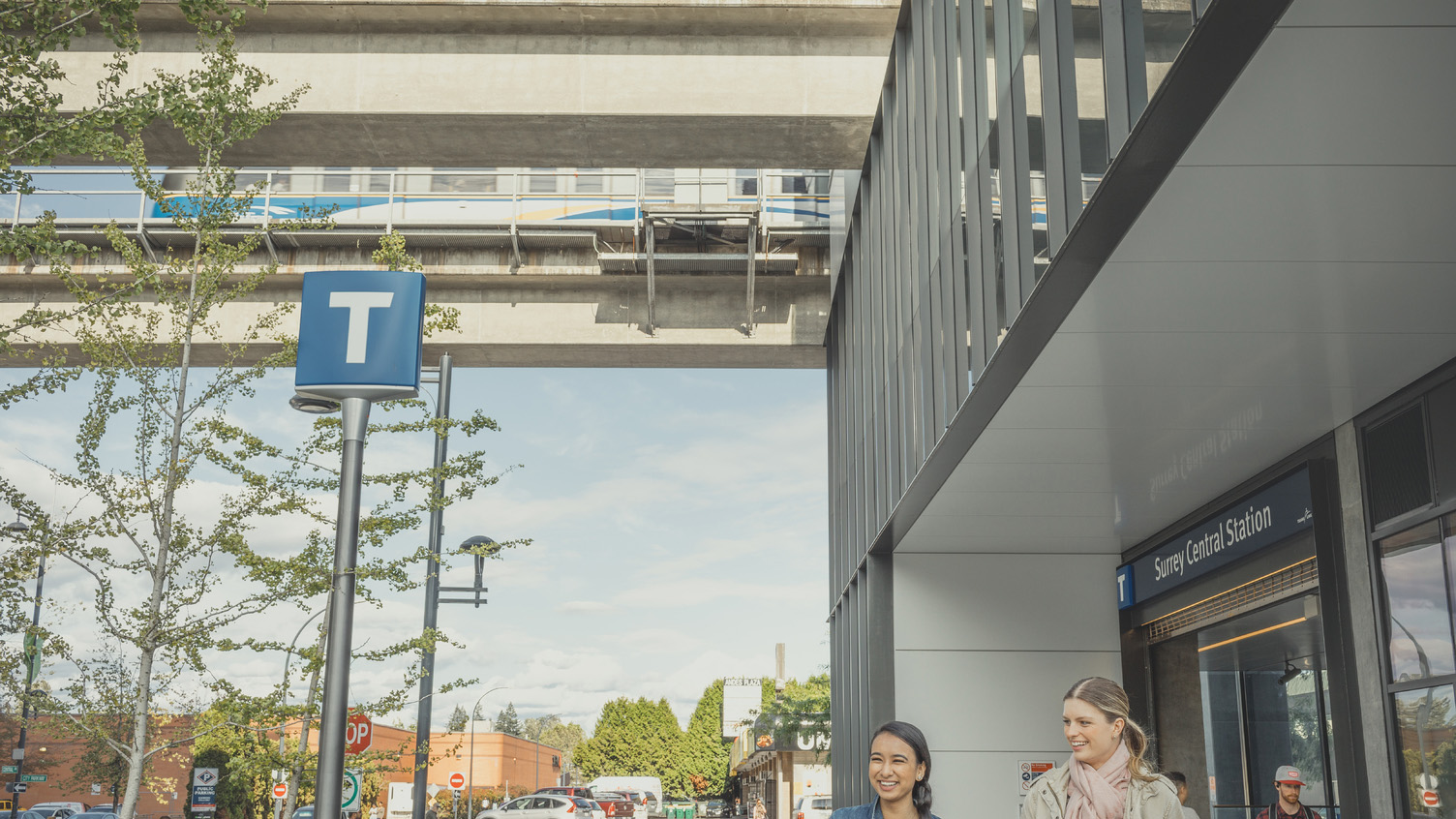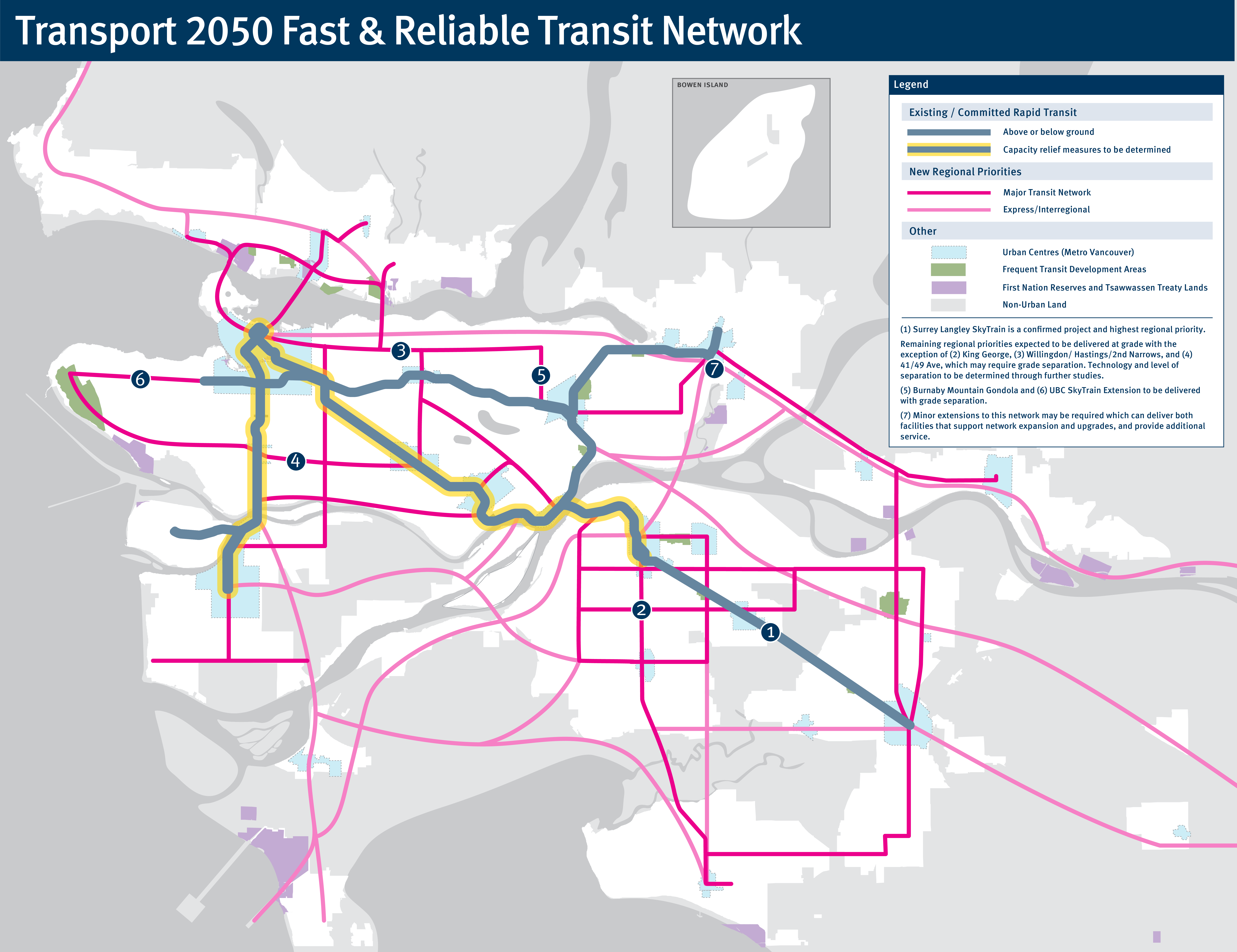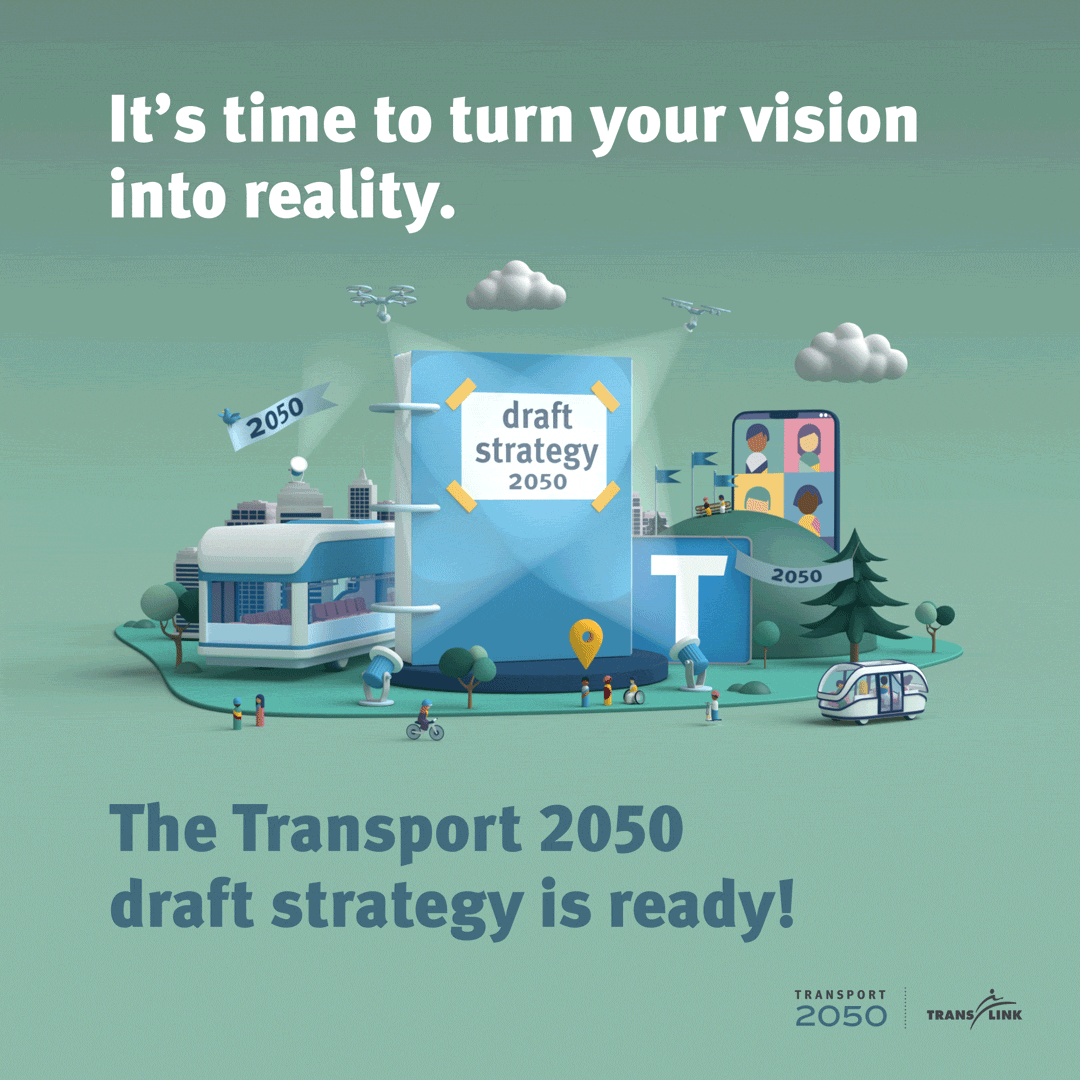The Transport 2050 draft strategy dreams up a super-sized transit network
The Transport 2050 draft strategy dreams up a super-sized transit network

Metro Vancouver’s transit system is expansive, spanning more than 1,800 square kilometres. That makes our system the largest in Canada. The SkyTrain and RapidBus networks, along with the 99 B-Line, SeaBus and West Coast Express, connect the regional centres.
That’s the big stuff, but then there’s the little things that make our transit system stand out against others like frequency. Imagine being able to walk outside your home and transit’s there where and when you need it.
This is what the Frequent Transit Network (FTN) is all about: convenient, reliable, easy-to-use, and frequent enough service that you don’t to refer to a schedule. Along these corridors, 15-minute-or-better service runs until 9 p.m. every day — starting at 6 a.m. on weekdays, 7 a.m. on Saturdays, and 8 a.m. on Sundays.
A 5-minute walk to transit — for everyone
By 2050, it’s anticipated the Frequent Transit Network will have expanded to most urban areas of the region. That means nearly all Metro Vancouver residents will be within a five-minute walk of transit that’s frequent and reliable enough that you don’t need to refer to a schedule.
It’s one of more than 100 recommendations included in the Transport 2050 draft strategy to improve transportation over the next three decades. No matter who you are or how you move, we have a plan to improve your travel.
We’re also working with stakeholders and partners to prioritize the movement of transit on roads through more extensive provisions of dedicated transit lanes, priority at intersections, and sidewalk extensions at bus stops.
This sets the stage for the quadrupling of Metro Vancouver’s rapid transit network — from 100 kilometres following the completion of the Surrey Langley SkyTrain and Broadway Subway projects, to about 300 kilometres of rapid transit by 2050.
A 300-kilometre “Fast & Reliable Transit Network”
This new transit network, called the Fast & Reliable Transit Network, delivers on high capacity, high frequency, fast, and reliable, travelling in dedicated lanes or tracks all day, every day in both directions.
The transit corridors highlighted in the map below:
- 1. Surrey Langley SkyTrain
- 2. King George
- 3. Willingdon/Hastings/Second Narrows
- 4. 41/49 Avenue
- 5. Burnaby Mountain Gondola
- 6. Millennium Line UBC Extension
Not only does this include new rapid transit, we’re also working with partners to implement new express and interregional connections. This will make it easy to travel across the region and beyond into the Fraser Valley, to the communities along the Sea to Sky Highway, and more!

Creating access for everyone
It’s all part of how we’re helping to create the future we want. Transport 2050 envisions a future of “Access for Everyone”, where all people — regardless of their background or the barriers they face — can easily get to where they need to go.
During the first phase of Transport 2050 public engagement in 2019, we heard expanding and improving Metro Vancouver’s transit system is a top priority for residents regardless of whether they drive, cycle, or take transit.
That’s why in the second phase of public engagement earlier this year, we proposed a key transformative action: fast and frequent rapid transit that’s a competitive choice for most longer trips. We asked the region to tell us if they wanted a rapid transit network that was more above-and-below ground like SkyTrain, or one that’s built more at street level like bus-rapid transit and light rail.
The region liked parts of both, so we’re proposing a hybrid approach in Phase 3 of public engagement, creating a Fast & Reliable Transit Network.
Ready for you to test drive
We’re want you to test drive the comprehensive Transport 2050 draft strategy, including the Fast & Reliable Transit Network, at transport2050.ca. The document sets out the transportation investments, services, and policies for a better, more affordable, and greener region — to move the region forward.
Other key actions include building out an 850-kilometre network of protected bikeways, prioritizing more streets for walking, biking, rolling and transit, as well as electrifying how we move.
We see a future where there’s more frequent, reliable transit nearly everywhere. Where your smartphone is the gateway to your next trip. And where reaching destinations outside the region is easy.








All Skytrain stations need to take a lesson from New west station, this was done right .Immediate access to services , food, entertainment ,shopping!
This what we want as riders, this is what we want as police activities at stations cut down crime ,more cameras, more visibility and brighter aspects all around.
Looking back to trips to Tokyo everything is train, subways ,transit focused when building and developers start something it is transit centric and wants to be on or in a station,
Brightness like Metrotown station should also be standard across the system ASAP, clean safe attractive stations ((((((((with plenty of washrooms A MUST )))))))
So… the FART network…
No North Van Skytrain? ?
pretty sure its there
Clean and Safe stations is what we need, last time in Aug of 2021, I was at Metrotown station and took the stairs to go down…..the wall and stairs were grossly dirty. Greater Vancouver is known for beautifully and clean city in the world but this did not meet the standard. Your Metrotown station agents(?) were saying that the transit cleaning is done by 3rd party………please manage or revisit the company for the up to day standard. With this new norm Covid 19 in these times, the cleaning company should come in hand with higher standard hygienic cleaning process. I hope to see cleaner stations all around should be must, for own publics and visitors, Thank you.